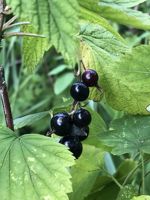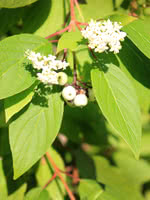Mon-Fri 9am - 5pm Mountain time
Yellow Twig Dogwood vs American Black Currant
Ribes americanum
Cornus sericea flaviramea
CUSTOM GROW
CUSTOM GROW
American Black Currant is a native deciduous shrub known for its clusters of small black berries that ripen in mid-to-late summer. The berries are edible and have long been used for fresh eating, preserves, and baking. They provide food for birds and mammals, and their fragrant spring flowers attract bees and other pollinators.
American Black Currant’s foliage serves as a host plant for butterfly species such as the Green Comma and Gray Comma, and its dense branching offers cover for wildlife. The shrub has traditionally been planted in shelterbelts, riparian buffers, and restoration projects.
Yellow Twig Dogwood is a small deciduous shrub with attractive, bright yellow bark.
It features delicate white, star-shaped flowers and white fruit. It is often used as a screen, and its wide-spreading roots help stabilize areas experiencing soil erosion.
Yellow Twig Dogwood complements Red Osier Dogwood, and it is a great filler to add winter color to shrub and flower gardens.
American Black Currant Quick Facts
Yellow Twig Dogwood Quick Facts
In row spacing: 0.9 m (3 ft)

